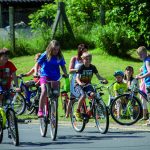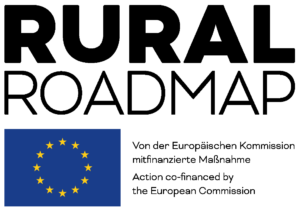
Blankensee, Mecklenburg-Western Pomerania, Germany
The municipality Blankensee with its population of approximately 600 inhabitants is located in the Eastern part of Mecklenburg-Hither Pomerania, in immediate proximity to the Polish border. Blankensee has always been an agriculturally characterised village – its economic development was enhanced by the connectedness to the Polish harbor town Stettin. The displacement of the border as a result of the second World War led to Blankensee suddenly being cut off from this living and economic space and it became a border and refugee village. Only the political turmoil of the 1990ies made it possible to reestablish the connections with neighbouring Polish municipalities.
Due to the economic weakness of the entire region, many young people leave the municipality – but since the neighbouring Polish municipalities are going through economic upswings, many Polish citizens purchase empty living space and rehabilitate it. In 2015, the Polish inhabitants already took up 15% of the population. This openness towards people of different nationality allows for the averaging process to be limited.
Parts of the municipality are located within protected areas such as a nature park, a nature preserve, an FFH areas, an EU bird sanctuary and a landscape reservoir. Also, a part of the Ueckermünder heather – the largest nature heritage area of Germany – is situated on municipality grounds. First steps towards the usage of the consequent touristic potential were taken – a positive aspect worth mentioning in this regard are the great connections to transregional public transport as well as highways. There are educational as well as care establishments within the area.
The targeted development process began in 2004 with the merger with the village Pampow into the municipality Blankensee. As a consequence, land consolidation and targeted development processes were initiated. Especially remarkable are the founding of of the “Cultural Club Pampow”, the realisation of the nature park “Am Stettiner Haff”, broad band extension, the execution of the projects “Art for the Village, Villages for Art” and “Future-Workshop Blankensee” as well as the transferred activities “ Rose Festival” in collaboration with the Polish partner-municipality Dobra, “German-Polish Language Course” as well as the “polish Day”. Associations which are both athletically and culturally oriented contribute to the increase of life quality. Measured by the size of the municipality, projects in the field of art are especially noteworthy.
Impulses for projects and development processes come from both the population as well as from professional supporters. For example, the University of Rostock, the transnational alliance Odermündung as well as the Academy for Sustainable Development were involved during the establishment of the touristic initiative “Randow Bruch”. Additionally, the participation in statewide and nationwide competitions gave impulses for development. The number of active citizens was continuously increased through their targeted appointment.
The collaboration with the Polish partner-municipality Dobra is groundbreaking, particularly concerning the depletion of language barriers and cultural differences – processes that were started under the motto “being open” and will be continued in the future.
Evaluated: 2016





